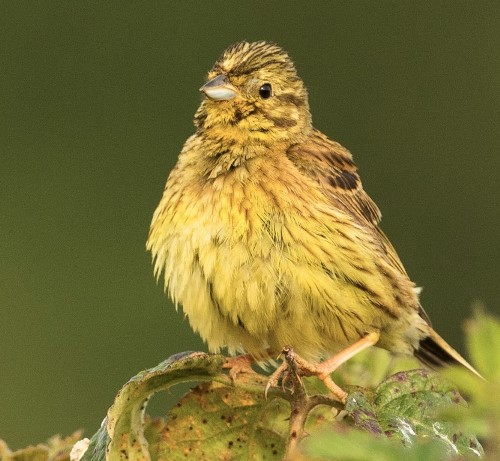Measuring ecological performance: An example of one of the farms using The Life Map to benchmark performance
This post is greater than 6 months old - links may be broken or out of date. Proceed with caution!

By Edward Darling, Redlist Revival
Background
2022.jpg)
Collecting data to monitor species is invaluable for showing population trends which, for priority species, invariably means relentless declines. Connecting that data to people that have the potential to make a difference to those priority species, motivating change and highlighting and promoting success would seem an obvious necessity to reverse these declines.
The charity Redlist Revival set out to create The Life Map where monitoring data for birds became accessible, understandable and usable. This process for England has resulted in The Life Map becoming a key stakeholder in the United Nations Action Plan for a Sustainable Planet in the Digital Age.
This is one farm’s experience of using The Life Map for measuring their performance for range and abundance of priority species of birds in food crops and grassland.
Integral to the success of the farm – and particularly for demonstrating this success to other farmers – has been a long history of wildlife recording, ranging from casual observation to long-term standardised annual monitoring of various taxonomic groups. Most of this monitoring work has been undertaken by volunteers, including the first decade which was entirely volunteer led.
2022.jpg)
One of the biggest regrets is that no surveys were carried out before restoration began. The first surveys were conducted when the basic features, cropping regimes and less-intensive techniques had had a year to take effect. Nonetheless, positive results have been seen from a wide range of taxa, including rare arable plants, meadow flora, butterflies and bumblebees, amphibians, reptiles and various mammals, including bats, which have increased dramatically over the meadows, and otters and water voles, which have returned to the brook. Water voles have benefitted from a campaign to eradicate American mink from watercourses in the region.
The most comprehensive monitoring has been of birdlife. The BTO Common Bird Census (CBC) technique has been repeated annually, showing a gradual increase in bird numbers and in particular strong rises in critical, Red-listed farmland birds such as grey partridge, skylark and yellowhammer. Some of these species have declined slightly since the loss of 10% set-aside, but numbers remain above the first baseline count, and it is likely that the numbers from that baseline were already above average for the area. As hedgerows have matured, other species have started to increase, most notably the Amber-listed dunnock and wren.
The CBC is the gold standard for territory numbers but requires a large amount of work. It was developed in the 1960s (Williamson & Homes 1964) and formed the basis of bird monitoring for many years but has been superseded by the Breeding Bird Survey (BBS), which was phased in in 1994 (Field & Gregory 1999). This survey involves volunteers walking two roughly parallel 1km transects through a representative 1km grid square (around 3,000 squares are covered in total) on two dates during spring. A simple total of birds counted is used to establish the index value for each square, and the totals gathered from around the country are compiled to generate trends for nearly over 130 species of breeding bird.
In 2015, the charity Redlist Revival (RR) developed a method of generating bird data for areas of land that could be directly compared with the BBS dataset. The farm joined an increasing number of landholders and registered an interest in sustaining life in The Life Map in a format that protected our identity and location and enabled us to benchmark our performance against national standards.

Instead of random 1km grid squares, people can choose transect lines that sample their land in the same way as the BBS survey, assuming a suitably sized block of land is available. Using exactly the same methodology each time and everywhere means that numbers counted on these RR surveys can be directly compared with the data held by the BTO from the 3,000 or so squares sampled by the BBS. The results from RR surveys are fed into a reporting system, which helps communities, land managers and landholders measure their performance relative to peers. Over 230,000ha (approaching 2% of the area of England) have been registered by landowners in The Life Map run by RR, all of whom have received information on bird species’ range and abundance for their area, along with other measures of environmental quality, as part of The Life Map initiative.
RR surveys have been conducted by the farm annually since 2015. Results are consistently impressive with top levels of abundance being achieved, though considerable variation occurs in numbers of birds encountered and it should be remembered that the surveys are simple snapshots of two days in spring. In some years, spring comes late and species such as yellowhammer and corn bunting can still be present in sizeable flocks – the presence of which can make the difference between an exceptional or an average performance indicator.
We have received Certificates formally acknowledging our performance levels and on two occasions, where abundance has exceeded the national threshold, we have received Life on Land Awards – one for Grey partridges and the other for Yellowhammers. These not only reflect the level of our ecological progress and achievements but also enable us to demonstrate this success with other landholders and to the wider community.
Getting involved
Any practitioners who wish to register interest or access the benchmarking process should email RR on info@redlistrevival.org or visit http://redlistrevival.org/tlc-registration-form. Registration and participation are free, and the aim is to engage as many landholders as possible.
Notes:
The Life Map
Redlist Revival (RR) manages The Life Map, which has been created as a method for consistently connecting knowledge, engagement and activity to sustain life. The Life Map uses 10km × 10km grid squares to present data in an accessible, understandable and usable format, to improve our understanding of life on land and the other components that sustain life, aligned to the UN Sustainable Development Goals. Some counties are now exceeding 10% of their area being registered with the Life Map.
More from Redlist Revival